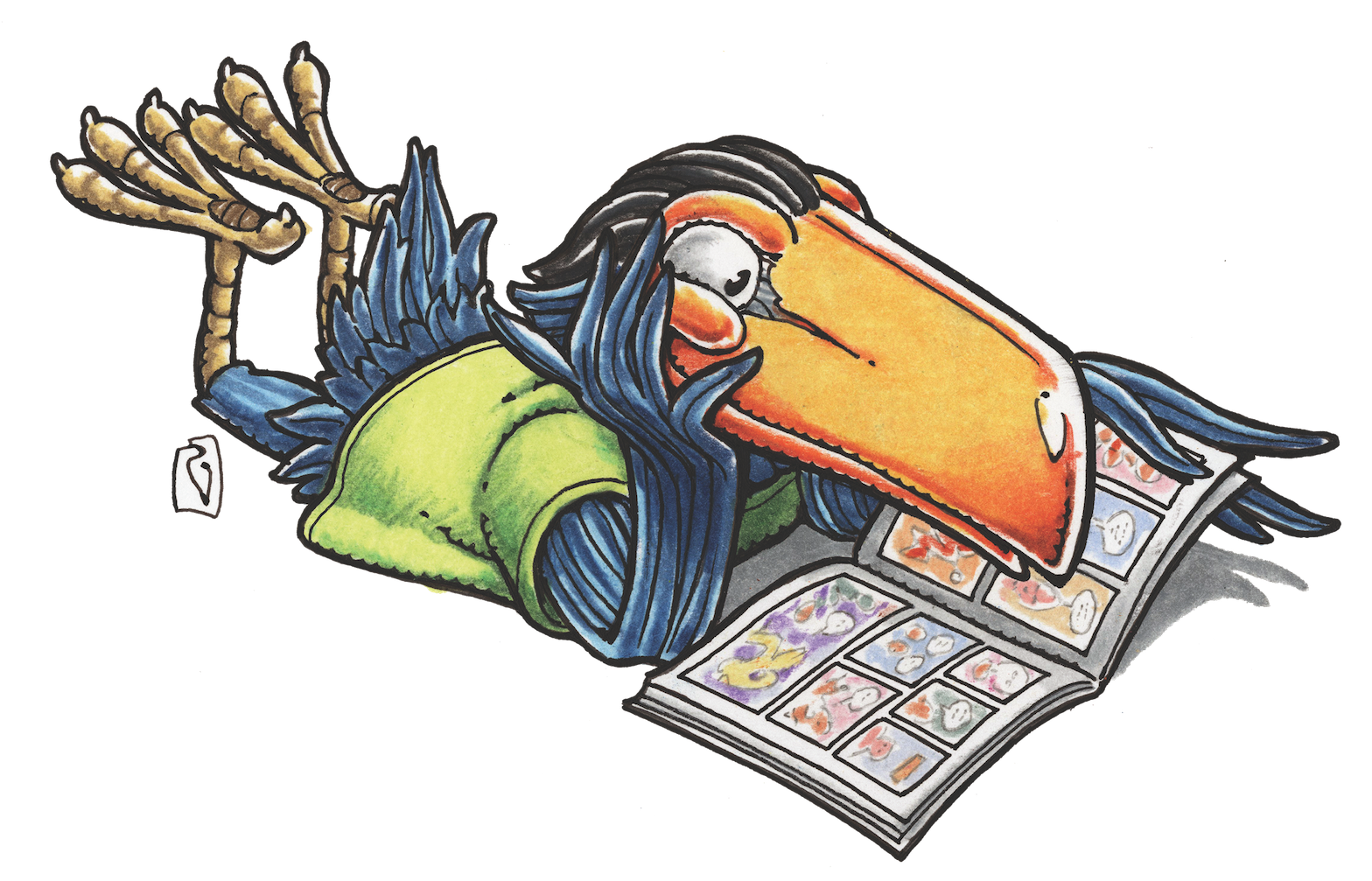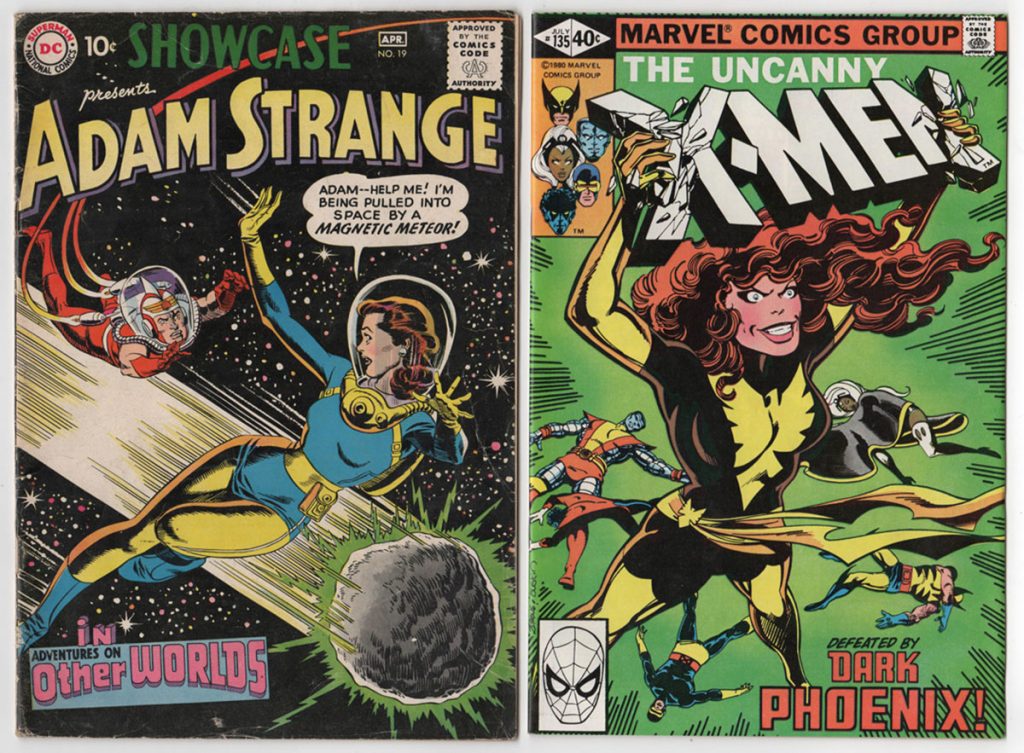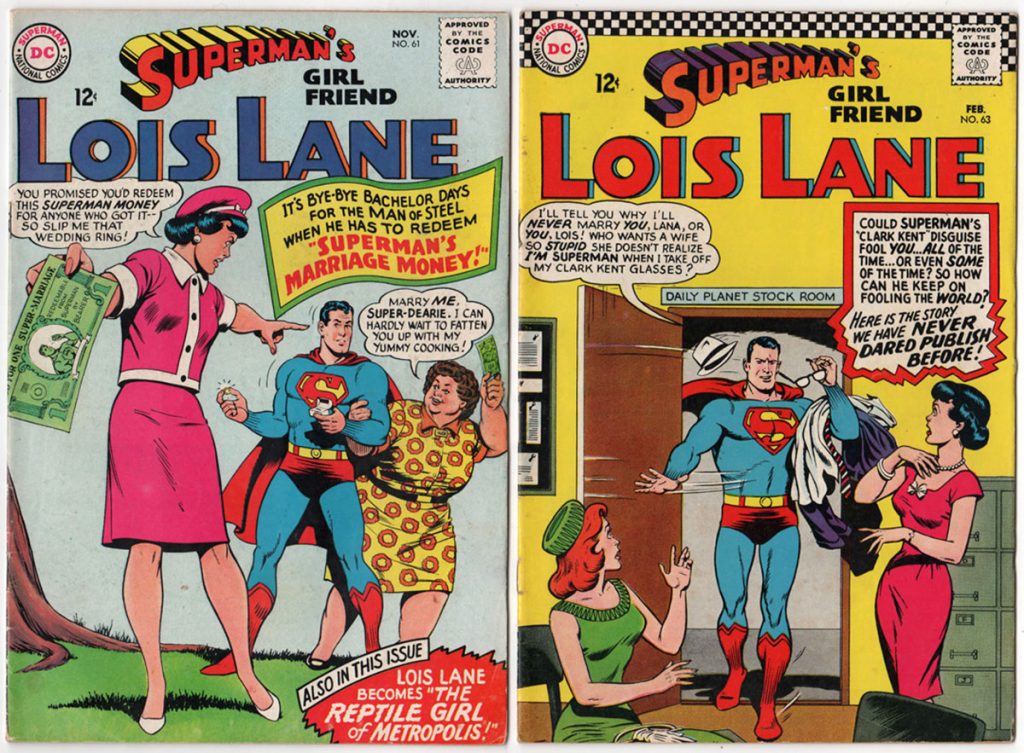MAGGIE’S WORLD BY MAGGIE THOMPSON
Maggie’s World 044: It’s Collectible! Why?

Collecting for me began when I first bought comics in the 1940s. The challenge then was clear: If you didn’t buy it now, the issue could be gone by the next time you visited the newsstand. If you didn’t hang onto it, you couldn’t read it a month later.
The result was that you bought what you liked—and you kept it. And what you kept was the foundation for (yes) your collection.
Compulsion for Completeness
Which is to say that “Gotta catch ’em all!” is not unique to Pokémon. It took me decades after its release to find a copy of Dell Four Color #140.
I think the reason I wasn’t able to add the 1947 issue of Walt Kelly’s Easter with Mother Goose to my Kelly collection in the first place was that Mom was distracted, what with giving birth to my sister at the time.
But it reinforced my obsession with haunting the comics racks.
Heck, in 1955, E.C.’s Extra! #1 never did go on sale in Meadville, Pennsylvania. It wasn’t decades before I acquired a copy—but it did take a few years. You remember things like that.
In fact, today I’ve almost completed my collection of Air Fighters Comics (1941-1945) and its continuation as Airboy Comics (1945-1953). And I didn’t even begin looking for copies until the 1960s, because the series wasn’t one I followed in its initial run. So: No nostalgia in that case—but, yes, I’m still a completist.

Speaking of Nostalgia
By today’s super-slick, high-production-values standards, some may decide that several of the comics I collected were pretty crude. After all, my collecting began when I was 4 and a half (and, yes, I do still have some of those treasures to this day). I’m willing to allow that super-sophisticates may question my early tastes.
But, dagnab it, I still find those tales rewarding—and they have the additional glow of remembrance of enjoying them as a young reader. Was I uncritical in the 1940s? Hey, I had 10¢—and only 10¢—to spend every week. That can make even a little kid pretty doggoned critical.
Preservation and Scholarship
About that matter of completeness: How will you know your collection is complete until you know what might be missing?

Jerry Bails and Bob Overstreet joined forces decades ago to compile a listing of all the comics they could identify in the course of years of research. Before they released that first price guide, I watched Jerry going through every dealer’s stock at a convention, noting details when he came across an issue he hadn’t seen before.
Think that was easy? There were errors in publishers’ information, skipped numbers, advertised issues that never appeared, and so on. And, of course, on-sale dates weren’t the dates printed in the issues.
Adding to the challenge: There are series to which few collectors yearn to give precious storage room. Harvey’s Little Dot ran for 164 issues from September 1953 to April 1976, but the Grand Comics Database has only managed to post indexes of 68 of them, as I write this.
And comic books are fragile. People have long been used to see comics as durable enough to survive rough handling by kids, after all. But newsprint? It’s not sturdy—which makes it just too bad for students of the art form. So it was that simple accumulations of comics quickly began to lead to appropriate bags and boxes to save the flimsy magazines from decay.
What’s It Worth?
Jerry and Bob turned their indexing project into an ongoing institution by adding price notations to their information. Given the fragility of comic books, it made more and more sense to focus on condition—and placing a higher value on those in better shape.
A bonus that Jerry looked for was that publicizing prices would keep people from throwing out their comic books.
On the other hand, most of us didn’t buy comics as an investment. Whereas we did pick through all the copies of an issue on the newsstand to find the very best one, we did it because we wanted the best one.
We tried to fight the idea of comics as no more than financial investments, when we edited Comics Buyer’s Guide. But let’s face it: It’s an element for some collectors. And people to this day really do resist the idea of throwing out comics. Thanks, Jerry!
Entertainment
Oh, well, if you’re going to be picky, sure. We collect comics because they provide an incredible variety of fun.
Heck, comics are so much fun that some people who read comics as kids decided to carve out careers in writing and/or drawing comics. I bet you can name a few.

Finally, There’s Kitsch
I first came across the term “kitsch” decades ago in Gilbert Highet’s 1954 essay collection A Clerk of Oxenford. Defining “kitsch” as a Russian word meaning “vulgar showoff,” he wrote that it meant “anything that took a lot of trouble to make and is quite hideous.” (You may know the name “McGonagall” from the Harry Potter novels, but Highet paid tribute then to William Topaz McGonagall [1825-1902] for poems that are acknowledged to be among the worst ever.)
Whereas I contend that terrible comic books were among the causes of decades of attacks on the art form, even dreadful comics do have their devotees. And, now that a flood of excellent comics stories has swamped the idiotic plotlines that were once commonplace, I find enjoyment today in issues that used to irritate me.
Mind you, Don and I did maintain a few issues in envelopes we labeled “Horrible Examples.” And every now and then—though I no longer label them as such—I’ll hold onto an outstanding representative. (It’s a safe bet that one of the rarest Marvel comics ever, for example, was the four-issue run of Street Poet Ray. The black-and-white 1990 series consisted of poems by Michael Redmond illustrated by Junko Hosizawa, and I’m assured that print runs were low. For a reason.)
All of the Above
Harvey Pekar said, “There’s no limit to how good the pictures can be, and there’s no limit to how good the words can be.” Which may be a simple enough answer to the question of why people collect.
And, of course, I have hardly exhausted the topic of comics collecting. For example, there’s probably someone out there who maintains a stack of Sunday newspaper comics pages in order to have a source of cheap wrapping paper on hand.
Whatever their reasons may be, it’s collectors who have brought the art form to its current level of nerd appreciation. Thanks to all of them!
Maggie’s World by Maggie Thompson appears the first Tuesday of every month here on Toucan!